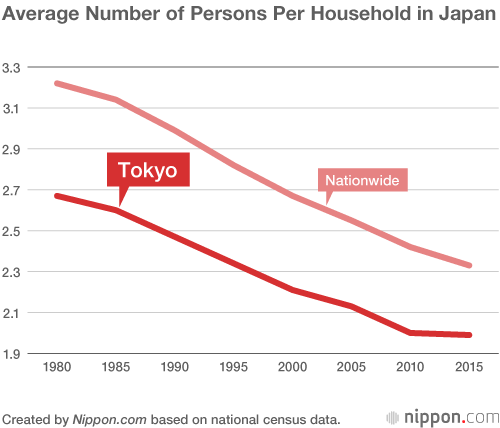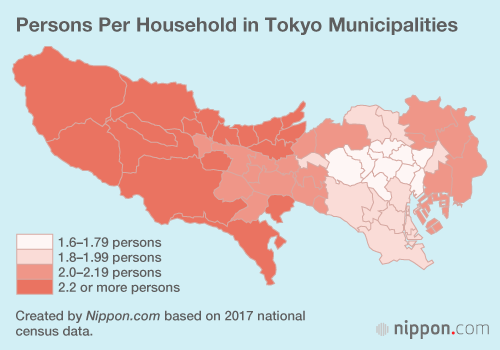
A Solitary Trend in Crowded Tokyo
Society Family- English
- 日本語
- 简体字
- 繁體字
- Français
- Español
- العربية
- Русский
The number of Tokyo residents continues to increase despite Japan entering an overall period of population decline. Although the 2015 national census shows that Japan’s total population shrank by 962,607 compared to the previous census conducted in 2010, central Tokyo’s 23 municipalities saw an increase of 327,045. Population per square kilometer in Tokyo is 6,169 persons. This is 1,500 more than the second-most densely populated city, Osaka—which averages 4,640 residents—and 18 times the national average of 341 persons.
But even in such a densely populated city as Tokyo the number of persons per household is gradually decreasing. In 2015, there were on average 1.99 persons per household, marking the first time for the average anywhere in Japan to fall below 2. Within central Tokyo, the average per household was 1.91 persons. The average is just 1.61 in the municipality of Shinjuku, and 1.64 in Toshima and Shibuya.

The map below clearly reveals that the average number of persons per household is lower the closer one gets to the heart of Tokyo. Despite the concentration of people in Japan’s crowded capital, many are living on their own.

Within the whole of metropolitan Tokyo, 47.3% of households have just one person, and in central Tokyo such households are the majority. In the municipalities of Shinjuku, Shibuya, and Toshima, single-person households make up over 60% of the total. The overall trend is driven not only by the population influx to Tokyo from other prefectures but also the strong tendency among younger people within Tokyo to move into the center of the city.
(Translated from Japanese. Banner photo © Pixta.)